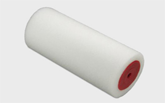How to Repair Cracks in Plaster Walls
Apr. 08, 2025Steps to repair a plaster wall
1. Start the project by cleaning the cracks with a hobby knife. Look for compounds, paint chips and other debris in the cracks and scrape them off.
2. Using a putty knife, apply a thin layer of joint compound to the crack. Starting at the top of the crack, drag the compound downward, pushing it into the crack as you go. Pull the knife blade through the crack at an angle (not perpendicular to the crack) to remove excess compound.
3. Apply mesh tape over the fresh compound. Starting at the top, gently press the mesh tape into the compound bed, then use a putty knife to cut at the bottom.
4. Immediately apply a second layer of compound to the top of the webbing tape. Starting at the top of the tape, apply the compound and remove the excess. Wait 45 minutes to an hour so it can dry.
5. Lightly sand the repaired area to remove any high spots and bulges while feathering the edges of the repair. Use a tack cloth to remove dust.
6. If the repair or crack is still visible, apply a third coat and sand the edges with sandpaper after they have dried.

How to repair small cracks in plaster
You can use a flexible repair compound to treat some small cracks through a two coat process and without any sanding.
1. Use a putty knife to scrape over the crack to make sure it is free of debris.
2. Apply the flexible repair compound to the crack. Start at the top and work your way down, pushing the compound into the crack.
3. It is important to remove excess patching compound as it is not sandable. Drag the blade of the putty knife across the crack at an angle (again, not vertically). Make sure there are no high spots or mounds left before allowing the compound to dry for at least two hours.
4. After drying, apply a second coat of flexible repair compound in the same manner as the first coat. Again, make sure there are no high spots or ridges left behind. Allow this coat to dry before applying paint.
5. The old plaster walls and ceiling are made of two layers of plaster. The brown coat is applied over wooden slats that are nailed to studs about 1/4 inch apart to form keyways for the brown coat to grip.
6. The brown coat is hardened and coated with topcoat. The integrity of the plaster surface depends on the bond between the plaster and its lath. When the adhesive breaks, the plaster will break.
Adhesives also do the job very well
We use a two-part adhesive that reattaches the plaster without a plaster gasket.
1. Drill a series of holes in the plaster on either side of the crack, stopping when you hit the lath.
2. Then, vacuum out the dust and spray conditioner (a milky liquid) into the same holes. The old plaster will soak this up like a sponge.
3. Next, inject a thicker adhesive into the complete caulking gun squeezing into each hole, then temporarily clamp the plaster to the slats with drywall screws and large plastic washers. Neither the conditioner nor the glue has any odor to speak of, and both are washed with water. The glue sets within a day or two.
4. Once set, unscrew the screws, pop the washers and fill the holes with jointing compound.
5. A quick degreasing of the joint compound completes the job.
A kit with everything you need to fix loose plaster costs far less than removing that much plaster, hauling it away, and hanging it on the wall or ceiling with tape.














